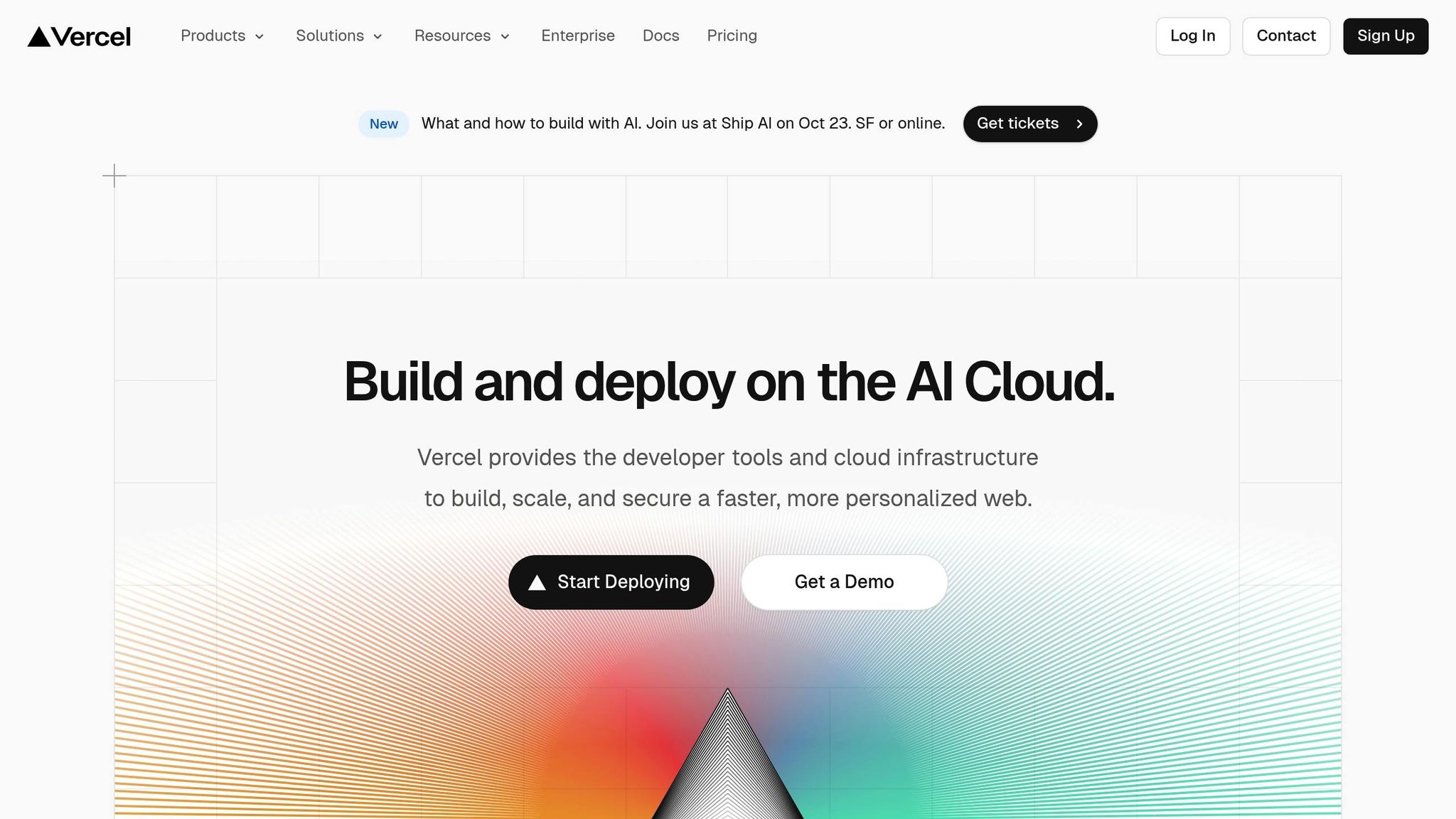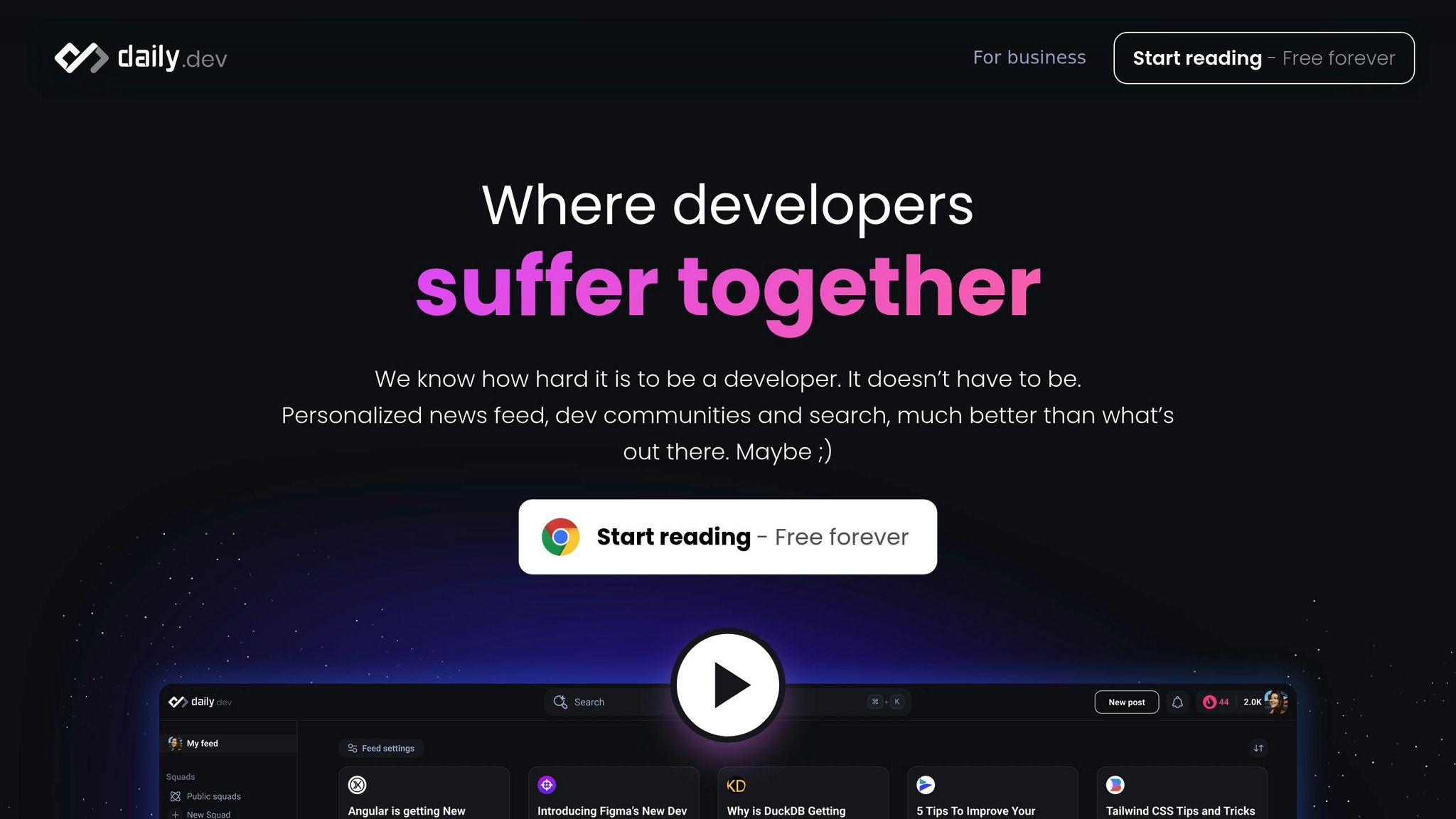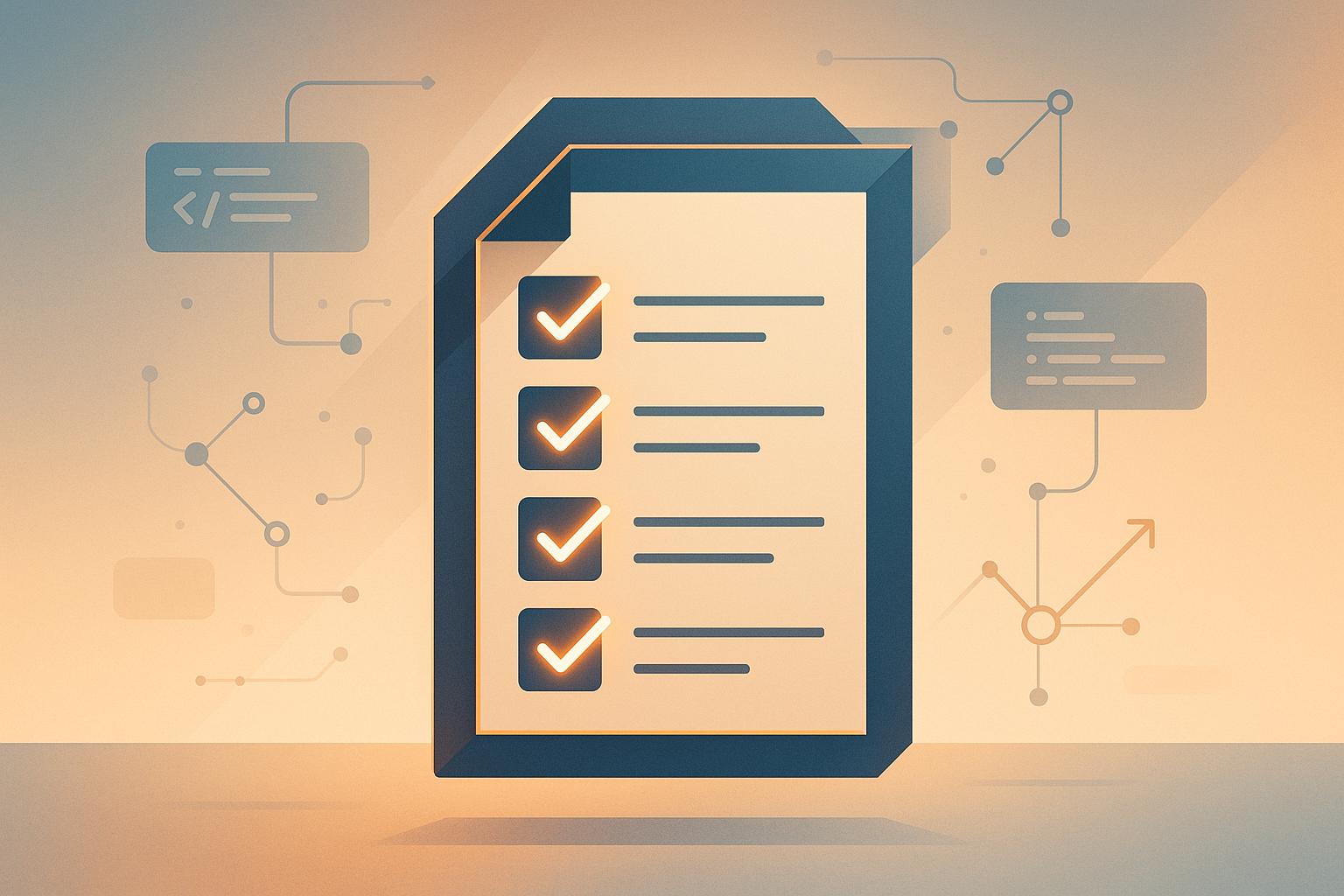


Explore the evolving landscape of developer marketing, focusing on trust, transparency, and community engagement in 2025.
Developer marketing focuses on helping software developers discover, adopt, and recommend tools or platforms. Unlike other audiences, developers value practical resources over flashy ads. They prefer detailed documentation, working code examples, and hands-on experiences. With 60% of developers influencing purchasing decisions, this approach prioritizes trust and technical accuracy.
Key takeaways:
- Developers distrust ads: They avoid traditional marketing and rely on peer recommendations.
- Focus on utility: Offer clear documentation, tutorials, and quick-start guides.
- Community matters: Engage on platforms like GitHub, Reddit, and Discord.
- AI and automation: Personalize content and streamline campaigns using AI tools.
- Open-source builds trust: Transparency drives adoption and loyalty.
To succeed, focus on creating resources that solve real problems and build credibility with developer communities.
The Ultimate Guide to Developer Marketing | Lee Robinson (Vercel)

Core Principles and Strategies for Developer Marketing
Developer marketing in 2025 is all about collaboration. Instead of relying on traditional promotional tactics, the focus is on working with developers to create meaningful experiences.
Basic Principles of Developer Marketing
To effectively engage developers, marketing efforts must be grounded in four key principles that set them apart from conventional marketing methods.
Trust Through Utility is the cornerstone. Developers value practical solutions over flashy campaigns. Forget the hype - what matters is providing tools like working code, clear documentation, and hands-on resources that address real challenges. Lindsay Brunner puts it succinctly:
"Useful > Persuasive. Developers reward utility. They punish hype"
Technical Accuracy is non-negotiable. Developers can spot inaccuracies a mile away, so your content must reflect a deep understanding of their challenges, including edge cases and limitations. Teams need members with technical expertise - former developers, technical writers, or those with DevRel experience - to ensure content is accurate and rigorously reviewed.
Transparency and Honesty are essential for building lasting relationships. Developers, who are often skeptical of traditional marketing, appreciate straightforward communication. With 73% of consumers willing to pay more for transparent products, this principle holds even more weight. Be upfront about your product’s limitations, clearly explain terms, and own up to mistakes when they happen.
Product-First Approach means letting the product speak for itself. Jerome Diaz captures this idea well:
"Treat every dev interaction like a product interaction"
This means prioritizing seamless and efficient developer experiences, ensuring every interaction adds value.
These principles create a foundation for strategies that resonate with developers and drive meaningful engagement.
Proven Marketing Strategies for Developers
Once the principles are in place, the challenge is turning them into actionable strategies that work.
Documentation as Marketing is one of the most effective tools. Companies like Vercel use their documentation as a primary entry point, treating every changelog like a mini-workshop. Their "Next.js Learn" tutorial doubles as a flagship product experience, and their documentation often outranks competitors’ homepages for relevant searches. Similarly, Clerk and Supabase streamline onboarding by using their documentation to guide users even before they sign up, reducing friction and speeding up adoption.
Education-First Content focuses on teaching rather than selling. Tutorials, technical deep dives, and real-world use cases resonate strongly with developers. Companies like LangChain and Airbyte have turned their DevRel efforts into growth engines by hosting Discord AMAs, workshops, and publishing tutorials that drive interest and engagement. The key is to prioritize content that educates and solves problems.
Frictionless Hands-On Experience makes it easy for developers to try your product. Twilio’s early success was built on simple curl commands in their documentation, allowing users to send a text message in under a minute. This quick, hands-on experience hooked developers before any sales pitch. Similarly, Algolia’s interactive playgrounds and SDKs allow developers to test their tools with minimal effort, building trust through experience.
Open Source as Trust Builder leverages transparency to drive adoption. Companies like PostHog, Temporal, and OpenTelemetry use open-source tools to establish credibility, later monetizing through services like support and security. HashiCorp’s success with Terraform is a great example - developers adopted the tool organically, paving the way for enterprise engagement.
Here’s how these strategies align with the developer journey:
| Stage | Developer Need | Marketing Strategy | Key Metric |
|---|---|---|---|
| Awareness | "Why should I care?" | Technical content in communities | Qualified traffic from search and forums |
| Activation | "Show me it works." | Tutorials and sandboxes | Time-to-Hello-World |
| Adoption | "Make it production-worthy." | Clear documentation and support | Weekly Active Developers |
| Advocacy | "I'll tell my team." | Community programs and highlights | Net New Developer Referrals |
These strategies help create a solid foundation for engaging developers while delivering measurable results.
The Role of Community and Peer Recommendations
When you prioritize technical accuracy and transparency, authentic community engagement naturally follows. Peer recommendations often outperform traditional advertising in building long-term trust.
Building Authentic Relationships within developer communities means being an active participant rather than a promoter. Engaging on platforms like GitHub, Discord, Stack Overflow, Reddit, and Hacker News involves sharing debugging tips, architectural insights, and industry knowledge. The goal is to establish trust and thought leadership, not just drive conversions.
Empowering Developer Champions amplifies your reach. For example, Slack’s founder Stewart Butterfield provided early beta versions to top engineers in Silicon Valley, creating influential advocates who later introduced Slack to their teams. These champions’ endorsements carry more weight because they come from trusted peers who understand the technical landscape.
Facilitating Peer-to-Peer Support within your community reduces the support burden while fostering stronger connections. When developers help each other solve problems using your product, it creates organic advocacy that feels genuine. As one expert puts it:
"Community over campaigns. You can buy clicks. You can't buy trust"
Creating Valuable Community Experiences goes beyond forums to deliver real value. Hedera’s learn-and-earn campaign onboarded over 5,000 developers, leading to seven high-potential projects. Similarly, Circle’s Bounty Challenge engaged over 2,600 developers, resulting in over 15,000 API calls and 2,000 blockchain transactions.
New Trends and Changes in 2025
The world of developer marketing is undergoing major shifts in 2025, driven by new technologies and the changing needs of developers. Three key trends are shaping how companies connect with developers and influence their choices.
AI-Driven Personalization and Automation
Artificial intelligence is taking developer marketing to the next level by moving beyond simple segmentation to real-time, highly tailored experiences. In 2025, the global AI-based personalization market hit $520.74 billion, with projections to grow to $629.64 billion by 2029.
Hyper-personalization is now a reality, going far beyond basic demographic targeting. AI tools analyze everything from behavior patterns to contextual data, creating deeply relevant experiences. For instance, Netflix uses AI to recommend shows based on viewing habits, while Spotify’s “Discover Weekly” playlist is tailored to individual listening preferences. In developer marketing, this means offering customized documentation, tutorials, and product suggestions based on a developer's tools, skill level, and project needs.
Automated Campaign Optimization is allowing marketers to focus on strategy instead of routine tasks. AI takes care of data collection, A/B testing, bid management, and content distribution. For example, a European telecom company increased customer engagement by 10% using AI-driven personalized messaging. This level of automation is making campaigns more efficient and impactful.
Generative AI is speeding up content creation dramatically - up to 50 times faster than traditional methods. Businesses can now produce tailored code examples, tutorials, and documentation at scale. The New York Times, for example, uses AI to determine the best times to schedule and distribute articles based on reader behavior.
Predictive Analytics is another game-changer, enabling companies to anticipate what developers need before they even ask. With 68% of U.S. adults using generative AI to find answers and nearly 60% of Google searches resulting in zero-click responses, developers expect instant, precise information.
However, transparency is key. Christina Inge from Harvard’s Professional & Executive Development program highlights this:
"Right now, the vast majority of marketers are underutilizing AI. I'll be honest with you; it will make your job a lot easier. Let's take advantage of that".
She stresses the importance of human oversight and suggests taking a gradual approach to building expertise in AI tools.
These advancements are reshaping how companies engage with developers, paving the way for deeper connections and more effective communication.
The Growth of Developer Communities
Developer communities are becoming essential for fostering genuine engagement. These spaces now serve as powerful platforms where peer-to-peer interactions drive product adoption and loyalty. The challenge lies in moving beyond surface-level metrics to achieve meaningful business outcomes.
Micro-Communities Are Leading the Way. Smaller, focused groups are proving to be highly effective in influencing decisions. Data shows that active communities contribute to higher trial-to-paid conversion rates. Developers often see their tool choices as part of their identity, leading to strong loyalty that directly impacts purchasing decisions.
Community-to-Product Integration is becoming a must. While most developer communities track basic metrics like member growth and engagement, only 23% link community activity to actual product trials or revenue. Companies that bridge this gap report 35% higher trial-to-paid conversion rates and 42% faster adoption of new features.
User-Generated Content is another major driver. Content created by developers - like success stories, code examples, and troubleshooting tips - performs three times better than company-produced material. This type of peer validation resonates more because it comes from people who face similar challenges.
Consistent Community Engagement is critical. Darren Yuen of Iron Horse warns:
"A company should never join if they have no intention of engaging on a regular basis. Developer audiences can always spot imposters and will likely ignore or disengage with brands that seem to only participate out of self-interest." - Darren Yuen, Iron Horse.
The most successful companies meet developers where they already are - on platforms like Stack Overflow, GitHub, Discord, and Reddit - rather than forcing them into branded spaces. Businesses tracking community-driven metrics report a 28% faster product activation rate and 45% higher retention among members.
Results often appear within three months, with significant improvements after six months. Early adopters see trial rates rise by 15–25% in months three and four, and feature adoption grows by 30–50% after six months.
Developers as Decision-Makers
While communities build grassroots support, developers are also playing a bigger role in purchasing decisions. Their influence varies depending on company size and the complexity of tools, but their input is becoming increasingly important.
Strategic Tool Recognition at the executive level is growing. Leadership teams are realizing that development tools directly affect business outcomes like customer experience, scalability, and revenue. As Design Sphere puts it:
"Web development tools are not simply technical conveniences - they directly impact the business model." - Design Sphere.
Company Size Impacts Influence. At large organizations with over 1,000 employees, developers often have limited say in tooling decisions. However, in smaller companies, their expertise carries much more weight in purchasing conversations.
Pain Point Disconnect remains a challenge. A March 2025 survey found that 34% of engineers struggle with failure recovery, a concern often overlooked by decision-makers. This highlights the need to include developer feedback in tool selection processes to address real challenges.
Internal Developer Platforms are giving developers more autonomy. These centralized hubs offer features like self-service tools, personalized dashboards, and workflow automation, allowing developers to manage their environments more effectively. The Low-Code/No-Code market, expected to hit $65 billion in 2025, reflects this trend of empowering developers.
Cross-Functional Collaboration is also growing. Engineering teams now have access to unified platforms for tasks like continuous integration, chaos engineering, and cloud cost management. While major purchases still require leadership approval, developers are gaining more control over their daily tools.
For marketers, this shift means crafting messages that address both developers’ practical needs - like reliability and efficiency - and business leaders’ priorities, such as ROI, growth, and risk management.
sbb-itb-e54ba74
Top Tools and Platforms for Developer Advertising
Reaching developers demands a thoughtful approach to selecting the right platforms. Unlike general consumers, developers often approach direct advertisements with skepticism, favoring educational and relevant content over promotional pitches. The key is to focus on platforms that align with how developers gather information and make decisions.
Overview of Advertising Tools for Developers
The world of developer marketing has changed dramatically. The global AdTech market, valued at $565.42 billion in 2024, is projected to surpass $1.22 trillion by 2033. This surge is fueled by AI-driven tools that enhance targeting accuracy by as much as 50%.
One of the most effective methods remains search advertising. With Google handling over 92% of global searches, Google Ads is an essential tool for reaching developers actively searching for solutions. Around 80% of companies use Google Ads for their pay-per-click campaigns, leveraging features like Smart Bidding and diverse ad formats to capture high-intent traffic.
For B2B targeting, LinkedIn Ads stand out. In 2023, LinkedIn generated $5.93 billion in ad revenue, and campaigns on the platform have shown a 33% lift in purchase intent, making it a great choice for connecting with developers in professional settings.
YouTube advertising is another strong option, particularly for delivering educational content. With $31.5 billion in global ad revenue in 2023, YouTube is a hub for tutorial-style videos that developers value.
Meanwhile, programmatic advertising platforms like The Trade Desk and Google Campaign Manager 360 are becoming more advanced. The Trade Desk, rated 4.6/5 on Gartner Peer Insights, and Google Campaign Manager 360, rated 4.5/5, offer precise targeting and AI-driven optimization. In the U.S., 80% of all display ads are purchased programmatically, providing the scale and automation needed for effective campaigns.
Platforms such as The Trade Desk, Adform, and PubMatic emphasize trust and transparency, addressing developers' concerns about data privacy and ethical advertising practices. These tools highlight the importance of combining trusted targeting with content that resonates.
Why Choose daily.dev Ads for Developer Marketing

daily.dev Ads has emerged as a purpose-built solution for reaching developers. With access to over 1 million developers daily, the platform provides a seamless, educational advertising experience tailored to this audience.
One of its key strengths is native integration. Ads are displayed in-feed, on post pages, or within personalized digests, blending naturally with editorial content. This approach aligns with developers' preference for non-intrusive, contextually relevant ads.
daily.dev Ads also offers granular targeting options, allowing advertisers to segment by seniority, programming languages, and tools. This level of customization ensures campaigns match developers' specific interests and current projects, reflecting the growing trend of AI-driven personalization.
With real-time performance tracking, advertisers can monitor engagement metrics like click-through rates and conversions, optimizing campaigns based on actual developer behavior. Additionally, expert creative support ensures that ads balance promotional goals with the educational value developers expect.
By presenting ads alongside trusted technical content, daily.dev creates an environment where ads feel relevant and less intrusive, seamlessly integrating into developers' daily workflows.
Comparison of Ad Formats and Targeting Options
Choosing the right ad format is crucial for optimizing developer campaigns. Each format serves different purposes and can significantly impact engagement and ROI.
| Ad Format | Visibility | Engagement | Best Campaign Goals | Key Advantages | Potential Drawbacks |
|---|---|---|---|---|---|
| Search Ads | High (top of search results) | Very High (intent-driven) | Lead generation, direct conversions | Captures high-intent users with measurable ROI | Competitive keywords, higher CPC |
| In-Feed Native Ads | High (integrated with content) | High (non-disruptive) | Brand awareness, content promotion | Blends seamlessly with editorial content | Requires careful content alignment |
| Display Ads | Broad (across web properties) | Moderate (placement-dependent) | Brand awareness, retargeting | Wide reach and strong visibility | Lower engagement, risk of ad blindness |
| Video Ads | High (especially on YouTube) | Very High (immersive) | Product demos, educational storytelling | Great for showcasing tools and concepts | Higher production costs, potential skip rates |
| Social Media Ads | High (in user feeds) | High (visually appealing) | Community building, B2B targeting | Advanced targeting, diverse format options | Can feel intrusive, platform-dependent |
Search ads are particularly effective for developers actively seeking solutions. Platforms like Microsoft Ads often offer lower cost-per-click rates than Google Ads, reaching a unique audience that skews older and more affluent.
Native advertising, such as the formats available on daily.dev, achieves higher engagement by integrating naturally with content. This format focuses on delivering genuine value rather than overt promotion.
Video ads are ideal for showcasing developer tools, provided the content remains educational and authentic.
Programmatic advertising continues to grow, with spending expected to rise from $546 billion in 2023 to $779 billion by 2028. Programmatic channels accounted for 84% of ad spend worldwide in 2022, with projections reaching 87% by 2027.
A successful developer marketing strategy often combines multiple formats. Search ads capture high-intent traffic, native ads maintain engagement, and display or social media ads support retargeting efforts. This balanced approach respects developers' preference for content that is both useful and authentic.
Step-by-Step Guide to Building a Developer Marketing Campaign
This guide walks you through creating a developer marketing campaign that truly resonates with developers' unique preferences and decision-making processes. The goal? Go beyond the usual marketing tricks and focus on delivering real value and technical depth.
Identify and Segment Your Audience
The first step in developer marketing is understanding and segmenting your audience. This isn't just a good idea - it’s essential. Companies using audience segmentation see a 760% increase in email revenue. That’s a statistic you can’t ignore.
To get started, combine different types of segmentation to build a complete picture of your developer audience:
- Demographic segmentation: Look at measurable traits like job roles, education, and seniority. A junior developer at a startup has very different needs from a senior architect at a large enterprise.
- Technographic segmentation: Categorize developers by their tech stack, favorite programming languages, tools, and platforms. A Python developer working on machine learning won’t be interested in the same content as a JavaScript developer focused on frontend frameworks.
- Behavioral segmentation: Analyze interactions like API usage, GitHub activity, and feature adoption to predict future actions and pinpoint high-value segments.
Michael Brito illustrates how specific segmentation can get:
"IT decision-maker" isn't one audience. It's many. There are CIOs concerned with digital transformation, Heads of Cloud Computing focused on hybrid solutions, and VPs of Network Operations worried about security. Each segment needs different messaging, different creative, different channels. Segmenting IT decision-makers ensures targeted messaging.
Here’s an example of how IT decision-makers can be segmented:
- Chief Information Officer: Focused on digital transformation and innovation; reads NY Times, WSJ, and CNN; active on LinkedIn and Twitter.
- Head of Cloud Computing: Interested in hybrid cloud, 5G, and networks; reads TechCrunch and MIT Tech Review; engages on LinkedIn and Reddit.
- Head of Software Engineering: Cares about coding and software development; reads Gigaom and VentureBeat; active on GitHub and Twitter.
- VP, Network Operations: Concerned with security and edge computing; reads The Verge and HBR; participates on Reddit and GitHub.
AI-powered tools are making segmentation faster and more precise. Companies using custom AI systems report 40–60% faster audience analysis and better identification of micro-segments. For B2B developer tools, firmographic data - like company size, revenue, and industry - can further refine your targeting.
Start small. Focus on 2–3 key developer segments, tailor your messaging for them, and test your results. As you gather data, you can expand and refine your approach.
Create Messaging and Content for Developers
Developers aren’t swayed by flashy ads or vague promises. They want content that’s practical, detailed, and honest. Here’s how to deliver that:
- Provide real value: Share working code samples, video tutorials, and real-world applications. These not only make complex ideas easier to understand but also build trust.
- Be accurate and detailed: Developers expect precise documentation, technical specs, and honest conversations about what your tool can and can’t do. Replace generic claims with specifics that address their challenges.
- Choose the right messengers: Authentic voices matter. For instance, Vercel swapped traditional sales reps for product advocates - developers who answered questions and shared resources - and saw great results in 2025. It’s no surprise, as 92% of consumers trust peer recommendations over ads.
Building community is just as important. Companies like Atlassian and Slack have excelled at this by adding playful, engaging elements to their products - like Slack’s custom emojis - which foster connection and loyalty. Encouraging user-generated content, like tutorials or shared experiences, can also amplify trust and engagement.
Collaboration with your internal development team is key to ensuring your content hits the right technical notes. Developers can spot inauthenticity a mile away, so accuracy is non-negotiable.
Measure Performance and Optimize Campaigns
Once your campaign is live, tracking performance and refining your approach are critical. Segmented, targeted marketing programs account for 77% of ROI, so measuring the right metrics is a must.
Here’s how to evaluate your campaign:
- Focus on engaged sessions: Instead of just counting page views, track visits lasting over 10 seconds with meaningful interactions. This shows genuine interest rather than accidental clicks.
- Monitor content-assisted conversions: Developers often need time to decide. Track actions like documentation views, code sample downloads, or API testing to understand how content supports their journey.
- Understand cost metrics: Developer-focused content may have lower initial CTRs, but it often attracts higher-quality traffic. For example, the average CTR for search ads is 3.17%, while display ads average 0.46%. These numbers might not seem high, but they can lead to better long-term results.
Return on Ad Spend (ROAS) and Customer Lifetime Value (LTV) are also critical. A healthy ROAS is around 4:1, and many SaaS companies aim for a Cost Per Acquisition (CPA) that’s about one-third of their LTV. Netflix, for instance, uses LTV-based strategies to invest heavily in acquiring subscribers, knowing the long-term value they’ll bring.
Optimization is where campaigns can really shine. Steve Pogson, an E-commerce Growth Specialist, shared this insight:
"For optimization, it's crucial to review daily metrics like user behavior and ad performance. During one of our campaigns, we used insights from Google Analytics to adjust targeting promptly, which increased conversion rates by 18% in just a week."
A/B testing is another powerful tool. HubSpot increased its blog promotion CTR by 30% just by experimenting with headlines. For developer campaigns, test variations in technical detail, code examples, and tone to see what resonates.
Finally, consider attribution modeling to better understand the developer decision-making process. Dell improved its ROAS by 70% after switching from a last-click to a data-driven attribution model, highlighting how multiple touchpoints contribute to conversions. This approach is especially useful when dealing with long evaluation cycles and multiple stakeholders.
Conclusion
In 2025, developer marketing is all about earning trust by delivering genuine value and maintaining technical precision. With 62% of developers now playing a key role in technology purchase decisions within their organizations, the stakes have never been higher. But for brands that truly understand this audience, the opportunities are immense.
The essentials - honesty, technical accuracy, and real engagement - are non-negotiable. Developers can spot insincerity or exaggerated claims from a mile away. They’re drawn to brands that offer real value: clear documentation, functional code samples, and open communication about both the strengths and limitations of their tools.
Companies like Stripe and Slack exemplify this approach. They focus on enabling and educating developers rather than relying on outdated marketing strategies. The methods discussed here succeed because they align with how developers think and make decisions. Whether it’s AI-powered personalization delivering relevant content or platforms like daily.dev Ads connecting with developers in their natural online spaces, the key is meeting developers where they are and offering what they genuinely need.
To get started, segment your audience, create technically accurate and value-driven content, and choose platforms that encourage authentic interaction. Developer communities and peer recommendations remain some of the most trusted paths for product discovery, so prioritize building relationships over simply pushing products. The takeaway is clear: authentic engagement is the cornerstone of effective developer marketing.
The brands that win are those that focus on utility, not hype. Whether you’re launching a new campaign or fine-tuning an existing one, keep your efforts rooted in utility and authenticity to connect with this discerning audience.
While the developer marketing landscape will continue to evolve, the fundamentals remain unchanged: deliver value, stay authentic, and respect your audience’s intelligence. Nail these basics, and you’ll be positioned for success well into 2025 and beyond.
FAQs
How does AI-driven personalization improve developer marketing in 2025?
AI-powered personalization is reshaping developer marketing in 2025 by offering deeply tailored experiences that quickly adjust to user preferences, behaviors, and emerging trends. This level of customization allows marketers to deliver content and interactions that resonate with developers, driving stronger engagement and improved conversion rates.
With advanced data analytics and generative AI, businesses can design dynamic, context-aware campaigns that speak directly to individual developers. These personalized strategies often result in better retention rates and increased customer loyalty, making AI a key component of effective marketing in today’s fast-changing tech world.
How is developer marketing different from traditional marketing, and why is it important?
Developer marketing is a whole different ballgame compared to traditional marketing. Instead of casting a wide net with persuasive messaging, it zeroes in on a highly technical and discerning audience. What works here? Accuracy, clarity, and trust. Developers aren’t swayed by flashy ads or emotional pitches - they’re looking for practical, no-nonsense information and recommendations from their peers.
This matters because developers tend to see through surface-level tactics. To truly connect, marketing efforts need to show genuine value and include technical substance. When campaigns align with their expectations, they don’t just grab attention - they build trust and foster lasting relationships with developer communities, especially as we move forward into 2025 and beyond.
How can companies build trust and encourage developers to adopt their products?
To earn trust and encourage developers to embrace a product, companies should prioritize building genuine and meaningful connections. Sharing real-world success stories from developers and encouraging peer recommendations can go a long way in establishing credibility. Equally important is offering content that directly addresses the specific challenges and interests developers face, ensuring it resonates with their needs.
Open and transparent communication is another key element. Actively listening to feedback and showing a willingness to adapt fosters stronger, long-term relationships. By focusing on honesty and consistently providing value, companies can create a solid foundation for engaging with developers and driving product adoption.






